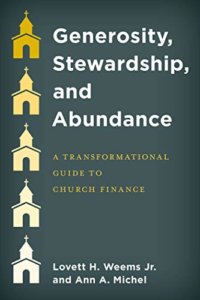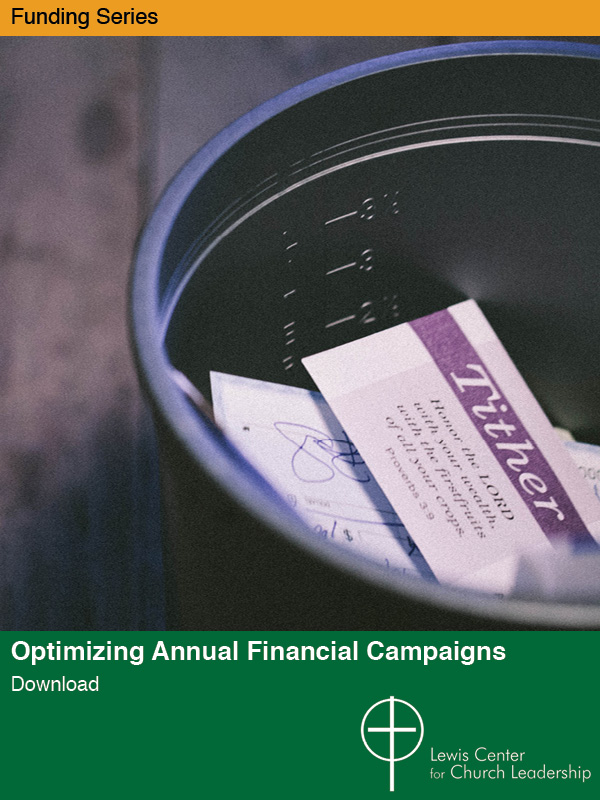Lovett Weems and Ann Michel share eight key lessons to help churches deal with the financial aftershocks of the COVID crisis. Now is the time to create a healthier financial future by managing resources wisely, engaging givers more effectively, and seeking more creative approaches to economic sustainability.
In the aftershocks of the COVID-19 crisis, many churches face a period of financial reckoning. These eight principles can help right the ship. They are all sound practices in the best of times, but are even more critical now as the church navigates uncharted territory in the post-pandemic world.
1. Know your givers.
Not every family or individual felt the economic impact of the pandemic in the same way. Some lost wages, jobs, or businesses. Others drew paychecks while working safely from home, reduced expenses, pocketed stimulus checks, and saw their retirement portfolios grow. Paying attention to your congregants’ economic circumstances and monitoring their giving patterns is not only a sound giving strategy, it’s a vital expression of spiritual and pastoral care. A one-size-fits-all approach didn’t make sense before the pandemic, and it makes even less sense now.
2. Keep asking people to give, but do so in sensitive ways.
Some congregations simply assumed people couldn’t afford to give during the pandemic or felt it was inappropriate to ask in a challenging time. Such churches surely worsened their own financial plight. Even in the best of times, there will be those in your congregations on hard times due to illness, job loss, or family challenges. When inviting people to contribute, it’s important to signal that they are still valued members of the community. Simply say, “If you’re out of work or suffering a financial setback, this is our time to help. You’re always welcome at this church, even if you can’t make a gift at this time.” This lets everyone know the church is sensitive to people’s financial reality. And those who can give feel better doing so when they know their church cares about people’s financial reality.
3. Extend generosity efforts beyond the walls of the church.
The COVID-19 shutdown was a dramatic illustration of the church’s dependence on place-based giving linked to worship. But traditional ways of cultivating generosity have, in fact, been waning in effectiveness for years. In a post-attractional era, when fewer and fewer people find their way into churches and even our regulars attend only a couple of Sundays a month, churches that don’t expand their generosity efforts are fishing in a smaller and smaller pond.
A silver lining of the pandemic is that it forced churches, some decades behind the times with regard to electronic giving, to put systems in place quickly. Electronic giving has the potential to reach younger generations, occasional attenders, and even people who don’t yet attend church by leapfrogging beyond our traditional reliance on the pledge and the offering plate. But only if churches develop creative new ways of soliciting electronic gifts from those beyond the reach of Sunday services.
4. Develop multiple streams of income.
In the post-pandemic era, many more churches will find it necessary to develop funding sources beyond tithes and offerings. Churches often see their financial circumstances through the lens of scarcity, failing to recognize assets and opportunities within their grasp. A more holistic approach to economic sustainability can involve greater creativity in deploying physical assets, seeking new partners and sources of support, and embracing more efficient ways of sustaining the church’s mission.
5. Take the opportunity to reassess expenses.
As the pandemic pause lifts and new patterns of ministry emerge, congregations have a unique opportunity to reassess programs and activities that were put on hold and ask: What needs to continue? What can be set aside permanently? What needs to be done differently? And what do the changes mean for staffing and building use patterns?
6. Be realistic when setting your budget.
In tough times it’s tempting to boost the revenue side of your budget on the basis of wishful thinking, hopefully assuming that new members, higher giving, or lucrative fundraising opportunities will suddenly materialize in the next budget year. While we all work and pray for these developments, it’s not prudent to build a budget on the assumption that these things will come to pass. The most important principle of building a sustainable budget is to base your revenue predictions on predictable and recurring sources of revenue, which entails a careful analysis of past revenue trends and budget performance.
7. Maintain a reserve fund.
The pandemic has underscored the importance of budgeting for a reserve fund and maintaining a reasonable cash reserve. Financial experts suggest that individuals and families maintain an emergency fund sufficient to cover expenses for three months, and churches should do the same. While no budget is disaster proof, your budget will be more resilient if you don’t live too close to the edge.
8. Know where you stand.
Too often, churches are caught off guard when their financial circumstances change simply because they haven’t paid close enough attention to key indicators and trends. And by the time they realize what’s going on, their options for responding may be more limited. As we enter a new and uncertain period, it is more important than ever for churches to establish systems for monitoring key financial indicators (see 9 Questions to Assess Your Congregation’s Financial Health) and to gauge subtle changes in giving patterns (see the Congregational Giving Profile.)
The pandemic was in some ways a wakeup call to face problems and opportunities that had existed long before the advent of COVID-19. The crisis has revealed areas of vulnerability and has increased the receptivity to change. Savvy church leaders will take this opportunity to create a healthier financial future for their congregations by managing resources wisely, engaging givers more effectively, and seeking creative new approaches to economic sustainability.
 Related Resources
Related Resources
- Generosity, Stewardship, Abundance: A Transformational Guide to Church Finance (Rowman and Littlefield, 2021) by Lovett H. Weems, Jr. and Ann A. Michel
- The Promise of Digital Giving by Ann A. Michel
- COVID-19 Reminds Us of Crucial Church Finance Safeguards by Lovett H. Weems Jr.
- How to Ask People to Give (Even in a Pandemic) by Margaret J. Marcuson






